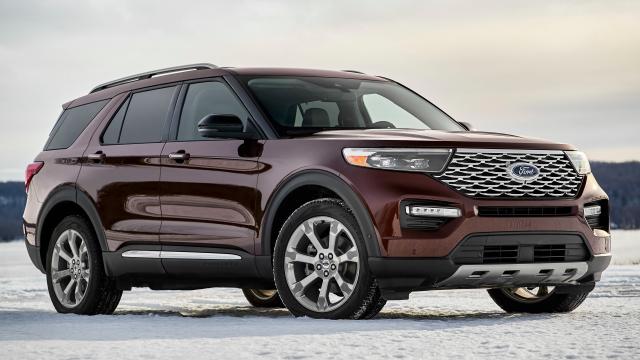Ford posted a paltry $US84 ($125) million profit for 2019, down from $US3.7 ($6) billion last year and $US7.7 ($11) billion in 2017. The low profit was in large part due to the launch of the 2020 Explorer, which was utterly botched. This year the stakes are higher, with the Mustang Mach-E launching and the new Bronco and next-generation F-150 debuting. Ford knows it can’t mess this up.
The shuffle last week at the highest ranks of Ford, with the 53-year-old top operations executive Joe Hinrichs “retiring” and being replaced by 57-year-old Jim Farley, formerly chief of Ford’s mobility efforts, suggested as much. That’s even though Ford CEO Jim Hackett said that the botched Explorer launch “was not tied” to Hinrichs’ retirement, which presumably means that it absolutely was.
It doesn’t really matter, in any case, given that it’s probably impossible to know who was really at fault for the Explorer launch. It anything it might be Hackett himself, for his insistence on rushing the new Explorer to the market. That ended up being too much of an ask for the company’s manufacturing division, a fate Ford would do well to avoid with the Bronco, Mach-E, and F-150.
The Explorer is an important vehicle for Ford. The F-150 is mission critical. You could argue that the Mach-E is as well.
What went wrong Explorer-wise, basically, is that Ford tried to do in 30 days what it had previously given six months for. From a Detroit News dissection in November:
Complicating matters, the automaker tried to build multiple new models and trim levels on the same line early on. The typical hiccups associated with the changeover to a new vehicle were amplified further by the narrow margin for error Ford left itself. Changing a plant over to build rear-wheel drive vehicles is enough of a challenge without a 30-day retool timeline and a hastened launch plan, multiple Ford officials said.
“When you go from front-wheel to rear-wheel drive, it’s kind of like building a house backwards,” said Ron Ketelhut, Ford’s global director of manufacturing strategy. It meant a big change for the 5,000-plus workers at the plant, a change Ford traditionally would have allotted more time to address.
“Going from front-wheel to rear-wheel is a really big deal,” Ketelhut said. “This is probably more difficult than building a new plant. You have a little more time if you’re building a new plant.”
The last time Ford changed a plant over from a front-wheel drive configuration, the automaker allotted six months at Michigan Assembly in 2018. The automaker had to retool that plant in Wayne to build new rear-drive Ranger pickup after spending years building front-drive Focus and C-Max compacts.
Production of the Explorer has since returned to normal, and for 2020 I’m sure Explorer sales will return to somewhere in the neighbourhood of the 227,732 it sold in 2018. (They’d dropped 26 per cent last year thanks to the production issues.) Ford’s revenues have also remained basically flat for the past three years, suggesting that while the company isn’t growing all that much it isn’t atrophying either.
And while it would be a success for Ford to have production of the Bronco, new F-150, and Mustang Mach-E go smoothly, the full consequences of Hackett’s biggest bet—going all-in on trucks and SUVs—remains to be seen, since, in a recession, Ford’s SUVs and trucks are going to look more expensive than they already are. Not that a recession is necessarily coming, but Ford should be doing better than it is in, today, a strong economy, with more manufacturing issues possibly disastrous.
From yesterday in Automotive News:
Ford is working to improve its results even as the auto industry is bracing for a possible downturn or recession in the coming years. U.S. new-vehicle sales are expected to fall below 17 million this year for the first time since 2014, even as rising transaction prices help pad revenue and profit.
“There were those that thought 2019 wouldn’t be a good economy, but it was, and [Ford] only did OK in North America,” David Kudla, CEO and chief investment strategist with Mainstay Capital Management in Grand Blanc, Mich., told Automotive News. “They have to make hay and execute now and take advantage of the good economy because we know we have some leaner times to come.”
